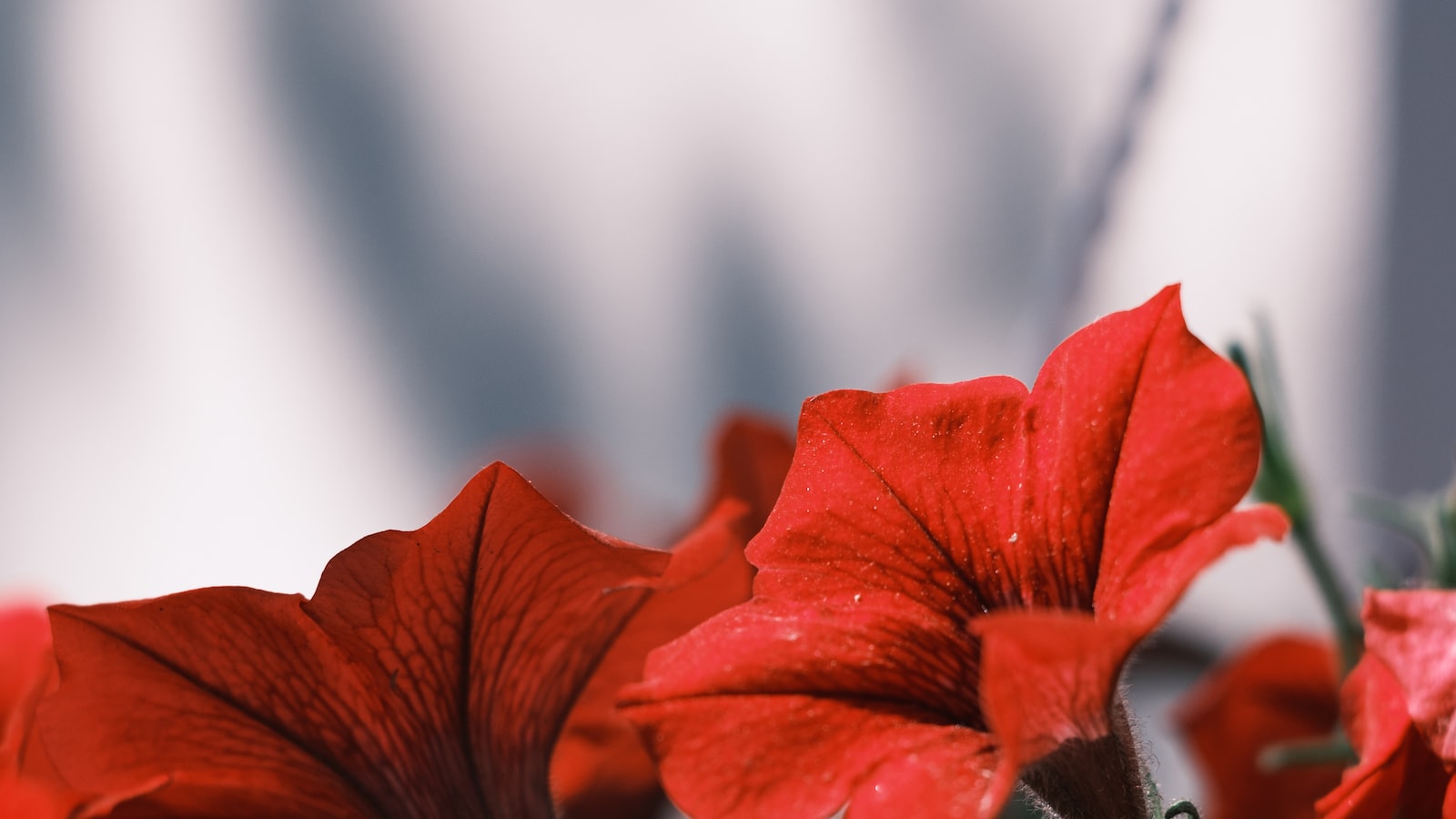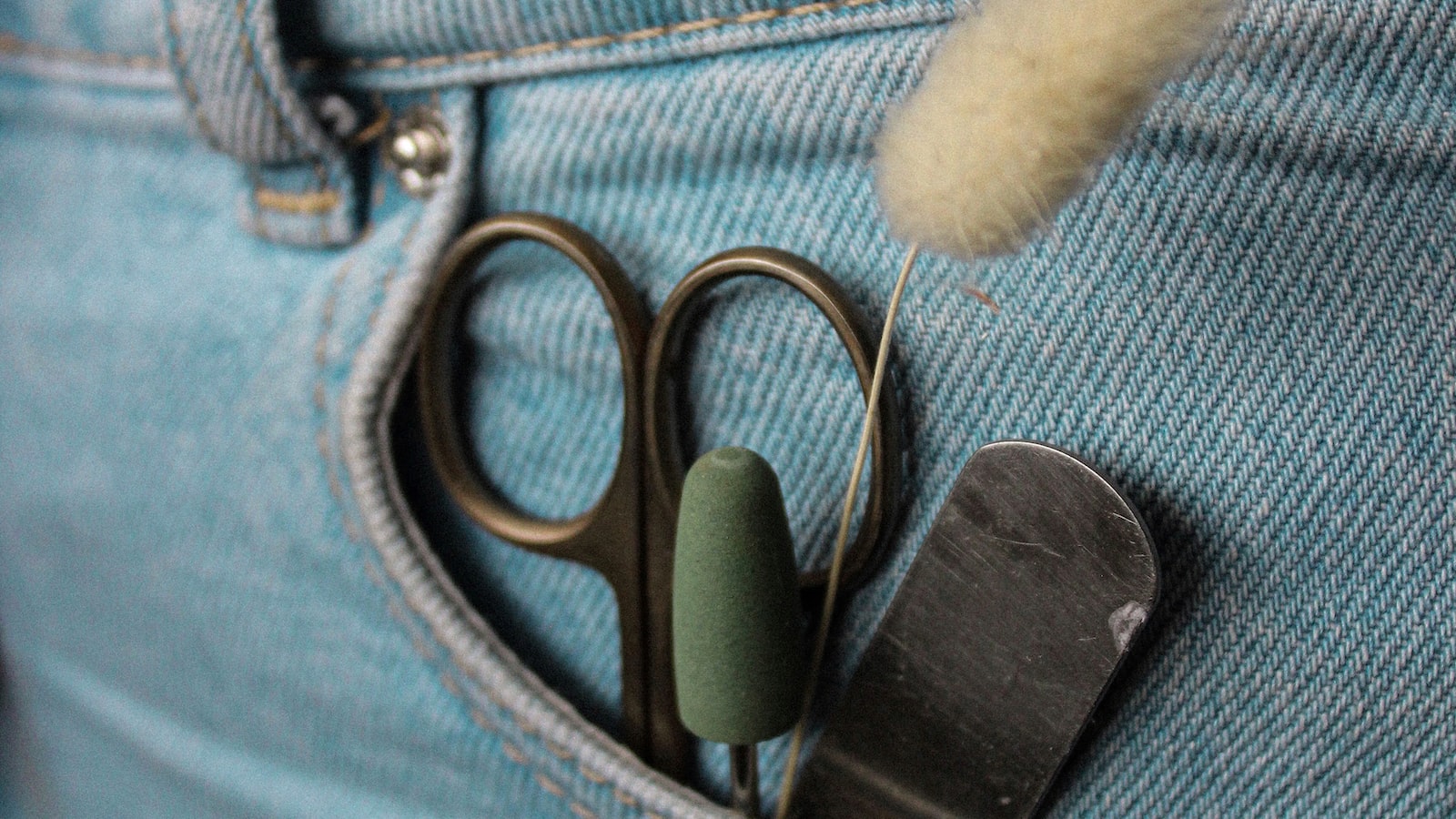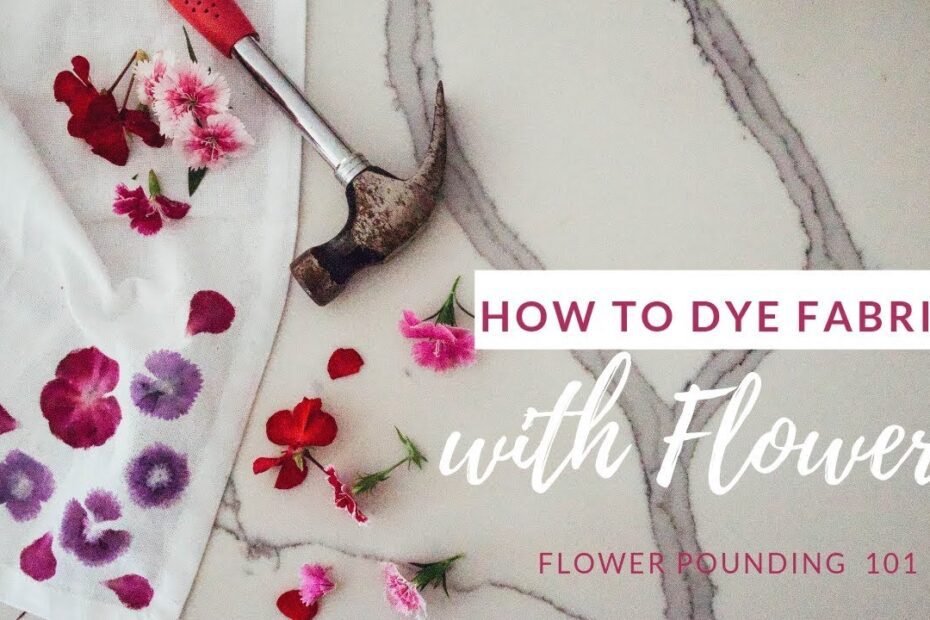Embracing the delicacy and vibrancy of nature’s floral palette, one can unlock an extraordinary world of textile artistry. In a realm where petals become brushes and fabrics transform into exquisite canvases, the art of dyeing with flowers transcends the ordinary and unfolds breathtaking possibilities. From the mesmerizing hues of roses to the captivating blues of cornflowers, this article unveils the enchanting secrets behind harnessing Mother Nature’s pigments to breathe life into cloth. Whether you are a seasoned artisan eager to expand your repertoire or a curious soul yearning to embark on a creative journey, join us as we unravel the meticulous steps to master the beguiling craft of using flowers to dye fabric. Prepare to be immersed in a vivid garden of blossoming artistry that knows no bounds.
Using Nature’s Palette: Harnessing the Vibrant Hues of Flowers to Dye Fabric
Flowers are not only nature’s beautiful creations, but they can also be used to add vibrant and unique hues to fabrics. By harnessing the natural dyes from flowers, you can transform your plain fabrics into works of art. There is a wide array of flowers that can be used for this purpose, each with its own distinct color properties.
To begin the process, gather a variety of flowers that have rich pigments, such as marigolds, roses, or lavender. Ensure that the flowers are fresh and have not yet begun to wilt. Once you have your flowers, follow these simple steps:
-
Prepare the fabric: Wash the fabric using a mild detergent to remove any dirt or chemicals that might interfere with the dyeing process. Rinse and wring out the fabric until damp.
-
Create a dye bath: Fill a large pot with water and bring it to a simmer. Add the flowers to the pot and allow them to steep for at least an hour. The longer you let the flowers steep, the more vibrant the dye will be.
-
Strain the dye: Using a fine mesh strainer or cheesecloth, strain the liquid from the pot into a separate container, removing any flower particles.
Now, you are ready to dye your fabric! Submerge the fabric into the dye bath, making sure it is completely covered. Let it soak for at least 30 minutes, or longer for more intense colors. Stir the fabric occasionally to ensure even dye distribution. Once you achieve your desired color, remove the fabric and rinse it with cold water until the water runs clear.
If you want to experiment further with flower dyes, you can try mordanting your fabric beforehand. Mordants are substances that help the dyes adhere to the fabric more effectively, resulting in longer-lasting colors. Some common mordants include alum, iron, or vinegar. Before using a mordant, make sure to research its compatibility with the type of fabric you are using.
Table:
| Features | Tips |
|---|---|
| Natural and eco-friendly dye | Use flowers that have high pigmentation for vibrant results |
| Creates unique, one-of-a-kind fabrics | Experiment with different flower combinations for interesting color variations |
| Requires minimal supplies | Keep in mind that natural dyes may fade over time with exposure to light and washing |
When it comes to selecting the right flowers for dyeing, variety is key. Each flower possesses its own unique pigments, and by combining different blooms, you can create a stunning array of colors. Some flowers, like marigolds and chamomile, offer bright yellows and oranges, while others such as lavender and delphiniums produce soft purples and blues. Be adventurous and experiment with a diverse range of flowers to achieve your desired color palette.
To enhance your fabric dyeing experience, here are some features and tips to consider:
| Feature/Tips | Description | Example |
|---|---|---|
| Mordants | Using mordants, such as alum or vinegar, can help fix and intensify the color of your flower-dyed fabric. |
|
| Maceration | This technique involves soaking your chosen flowers in water to release their natural dyes before applying them to the fabric. |
|
| Fabric Selection | Not all fabrics will absorb dye in the same way. Experiment with different types, such as cotton, silk, or linen, to achieve varying effects. |
|
With these secret ingredients and tips, you are now equipped to embark on a colorful journey of transforming plain fabrics into stunning, nature-infused masterpieces. Let your imagination run wild and watch as flower-dyed textiles breathe life and enchantment into your creations. Unveil the magic of Mother Nature and let her delicate petals impart their radiant hues onto your fabrics.
Mastering the Dyeing Process: Step-by-Step Guide to Achieving Stunning Results
In the world of fabric dyeing, exploring unconventional methods can lead to astonishingly beautiful and unique results. One such technique involves harnessing the natural pigments found in flowers to dye fabric. This step-by-step guide will take you on a journey of transforming your plain fabrics into stunning works of art using the vibrant hues of nature’s floral bounty.
Firstly, it is important to select the right type of flowers for your dyeing adventure. Opt for flowers that possess strong color pigments, such as marigolds, roses, or lavender. Each flower will yield different shades, allowing you to create a varied palette of colors for your fabric. Once you have gathered your flowers, remove the petals and place them in a large pot of simmering water. Let them steep for approximately 30 minutes, allowing the vibrant colors to infuse the water. For a deeper and richer shade, prolong the steeping time.
While your flower-infused water is simmering, prepare your fabric by soaking it in cold water. This will ensure that the fabric is receptive to the dye and allows for a more even distribution of color. After the fabric has soaked for a few minutes, carefully remove it from the water and wring out any excess moisture. Now, it’s time to dip your fabric into the flower dye bath. Gently submerge the fabric into the pot, ensuring that it is fully immersed. For a uniform color, stir the fabric occasionally to evenly distribute the dye. Depending on the desired intensity of color, you can leave the fabric in the dye bath for a few minutes or several hours. Once the fabric has reached your desired hue, rinse it with cold water and pat it dry with a towel to set the color.
Table:
<table>
<tr>
<th>Features</th>
<th>Tips</th>
</tr>
<tr>
<td>Use a variety of flowers to create a diverse color palette for your fabric.</td>
<td>Experiment with different flower-to-water ratios to achieve various shades.</td>
</tr>
<tr>
<td>Become a forager and collect flowers from your own garden or the wild.</td>
<td>Test your dye mixture on a small piece of fabric before dyeing your entire project to ensure you achieve the desired color.</td>
</tr>
<tr>
<td>Add a mordant, such as alum, to the dye bath to help the color adhere to the fabric.</td>
<td>Wrap your fabric in plastic wrap or use a plastic bag to create a marbling effect by preventing certain areas from absorbing the dye.</td>
</tr>
</table>With this step-by-step guide, you are now equipped to explore the fascinating world of flower dyeing. Unleash your creativity and let nature’s vibrant hues elevate your fabric projects to a whole new level of beauty.
Preserving the Blossoms’ Brilliance: Tips for Caring and Maintaining Dyed Fabrics
Using flowers to dye fabric is a remarkable and eco-friendly way to add vibrant hues and unique patterns to your textiles. There’s something truly magical about the process of harnessing the natural pigments found in blossoms to create stunning, one-of-a-kind designs. However, once you have successfully dyed your fabrics, it is important to know how to care for and maintain them to ensure their brilliance stands the test of time.
Features and Tips for Caring and Maintaining Dyed Fabrics:
| Feature/Tips | Benefits |
|---|---|
| 1. Gentle Hand Washing | Preserves the delicate fabric and prevents color fading. |
| 2. Avoid Sun Exposure | Protects the vibrant colors from bleaching or becoming dull. |
| 3. Use Mild Detergents | Prevents harsh chemicals from damaging the dyed fabric. |
By gently hand washing your dyed fabrics using mild detergents, you can maintain their brilliance and prevent color fading. It is recommended to soak the fabric in cold water with a gentle detergent for a short duration. Avoid using harsh chemicals or bleach, as they can damage the fabric and strip away the natural dyes.
Additionally, when caring for your dyed fabrics, it is crucial to avoid exposing them to direct sunlight for prolonged periods. Sun exposure can cause the vibrant colors to bleach and fade, diminishing the beauty of your textile creations. Instead, store your dyed fabrics in a cool, dark place to preserve their brilliance for years to come.
Frequently Asked Questions
Q: Can I really use flowers to dye fabric?
A: Absolutely! Nature’s little art creators lend themselves perfectly to transforming your fabrics. With vibrant hues and delicate aromas, flowers are the creative force behind a fabulous fabric dyeing journey.
Q: Which flowers are best suited for fabric dyeing?
A: Mother Nature’s palette is vast, but some flowers are dyeing superstars! Marigolds unleash a jubilant yellow, while delicate roses gift a lovely shade of pink. Don’t forget the humble violet, capable of painting your fabric in a regal purple hue. The possibilities are endless, waiting for you to explore!
Q: How can I get started on this floral fabric dyeing adventure?
A: Dive headfirst into this blooming endeavor by gathering fresh flowers of your choice. Crush and soak them in hot water, allowing their colors to infuse the liquid. Delicately submerge your fabric and let it simmer in this enchanting concoction. Soon, you’ll have a unique, nature-inspired masterpiece ready to don and showcase to the world! As we bid farewell to this blooming adventure, remember that the world of fabric dyeing is vast and ever-evolving. By harnessing the ethereal essence of flowers, we have uncovered a palette of vibrant and exquisite hues, breathing new life into our fabrics.
Embrace the untamed beauty of nature, as petals and pigments intertwine in a delicate dance. Tap into the endless possibilities that lie within your garden or wildflower meadow. With just a splash of ingenuity, you can transform mundane garments into sensation-provoking works of art.
As time passes and trends shift, this enchanting art form will continue to captivate souls seeking the extraordinary. Allow your imagination to run wild, experiment fearlessly, and create your own tapestry of floral mastery.
Remember, the process is not merely about color, but a celebration of handcrafted tales. Each fabric, adorned with the mystical essence of flowers, carries whispers of nature’s secrets. As you delve into this magical realm, let the transmutation of nature and fabric fill your heart with joy and curiosity.
Let your creations speak volumes, a silent orchestra of botanical wonders. And as you embark on this journey, embody the spirit of nature’s artists. Unleash your inner painter, sculptor, and philosopher. Immerse yourself in the alchemy of petals, finding solace in the belief that beauty can bloom from even the most unexpected of sources.
So, farewell, intrepid dyers. May your hands forever be stained with the colors of creation, and may every thread tell a story of eternal enchantment.
- When to Put Weed and Feed on Lawn in Michigan - October 16, 2023
- When to Fertilize Potatoes Plants - October 16, 2023
- Can You Plant Clover in the Spring - October 16, 2023

